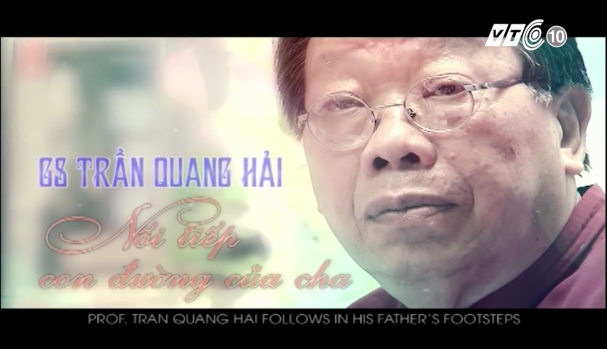PHYLLIS FREE : THROAT SINGING
THROAT-SINGING
by PHYLLIS FREE
D503-A Geographic Appreciation of Music
Peter Galvin & Sid King
Indiana University Southeast
FALL 2000
INTRODUCTION:
Listening samples:
The Power of Overtones and Chants by Don Campbell
Songs of the Inuit (Canada)
INUIT THROAT-SINGING (Katajjaq)
• Technique: 4 methods of producing sound
• Tradition: women standing face-to-face,
using each other’s mouth as resonator
competitions, teams, entertainment
• Roots: imitation of sounds in nature, especially animals
survival? excercise? warmth?
shamanic traditions based in spiritual animism?
(more on this later)
* EXERCISE (participatory): Inuit Style — try it
TUVAN THROAT-SINGING (Khomeii & variations)
Listening sample: Where Young Grass Grows by Huun-Huur-Tu
• Techniques: various styles/techniques characterized by
simultaneous pitches, amplifying overtones,
nasal tones plus manipulation of oral cavity
rhythmic harmonic melodies over fundamental tones
sometimes extended pauses between breaths
• Tradition: functional communication, nomadic herdsmen
incorporated into songs with popular themes
(horses, life on the land, emotional relationships)
gender: equality in ancient traditions, later became
taboo for women, now some women practicing
• Roots: spiritual animism, sounds from nature imbued with spiritual significance
(including geographic features–rivers, mountains, etc.)
harmonics project over expanse of Central Asian steppes
surrounded by mountains which echo sounds
* EXERCISE–try it
HARMONIC TONING, OVERTONE SINGING
(TIBETAN & MONGOLIAN STYLE CHANTING)
• Techniques: “Asian-style”, same as described for Tuvan
• Traditions: spiritual practices, meditation, healing
• Roots: ancient spiritual practices
tribal shamans, Buddist monks, etc.
Listening sample: Om Namaha Shivaya
BACK TO THE INUIT: WHAT & WHY IS MUSIC?
Viewing sample: The Nature of Music
Discography
RECORDINGS PRESENTED
• OVERTONE SINGING IN HEALING & MEDITATION PRACTICES
The Power of Overtones and Chant by Don Campbell
1991 Institute for Music, Health, and Education
Box 1244, Boulder CO 80306 (CS)
(selected excerpt )
• INUIT THROAT-SINGING
Songs of the Inuit People (Canada)
1994 JVC World Sounds, Canada VICG 5333
JVC Musical Industries, Inc (CD)
Track #: 1. Amma 2. Ihan 3. Amuma
• TUVAN THROAT-SINGING
Where Young Grass Grows by Huun-Huur-Tu;
produced by Niall Macaulay & Sayan Bapa
1999 Shanachie Entertainment Corporation 66018 (CD)
Track #: 3. Deke-Jo
• TIBETAN & MONGOLIAN STYLE OVERTONE CHANTING
Om Namaha Shivaya by Robert Gass and On Wings of Song;
Tenth Anniversary Deluxe Edition;1996 Spring Hill Music 6018.2 (CD)
Track #: 2. Om (Aum)
• INUIT (VIDEO)
The Nature of Music
Produced, written, and directed by Jeremy Marre; Reiner Moritz Associates Ltd.
Public Media, Home Vision (VHS)
End of Part I: 5 minutes
ADDITIONAL RECORDINGS
THROAT-SINGING
• Back Tuva Future by Kongar-Ol Ondar (Warner Brothers Records)
• Sprouts (Young Voices of ancient TUVA ) by O”zum (SUM 90 008)
• Voices from the Distant Steppe by Shu-De (Realworld/Carol 2339-2)
• Cho”o”mej–Throat-Singing from the Center of Asia by Tuvinian Singers(WDR 55.838)
• TUVA: Echoes from the Spirit World (PAN 2013 CD)
• TUVA: Voices from the Land of the Eagles (PAN 2005 CD)
• Mongolie by Ensemble Mandukhai (Playasound – PS 65115)
• Mongolian Songs (KICC 5133)
• Mongolia (Mongolie ) (UNESCO D8207)
• Uzlyau (Gutteral singing of the peoples of the Sayan, Altai, and Ural Mountains (PAN 2019 CD)
• TUVA: Voices from the Center of Asia (1990 Smithsonian Folkways CD SF 40017)
• 60 Horses in my Herd by Huun-Huur-Tu (S1993 Senachie 64050)
• Hearing Solar Winds by David Hykes and the Harmonic Choir (1994 Ocora ,
distributed in the US by Harmonia Mundi)
• TUVA, Among the Spirits: Sound, Music, and Nature in Sakha and Tuva (1999 Smithsonian Folkways 40452)
Please note: Source document for the first ten recordings listed above is LINGUIST List 5.1422: TuvanThroat-Singing. Source states that these recordings “may be found in local retail music outlets or purchased directly from the publishers” but suggests for readers “to purchase Tuvan CDs from The Tuvan Trader, an updated copy of which is included with each Friends of Tuva (FoT) Newsletter….(Proceeds help fund Friends of TUVA projects.)” The last two listings are from SCIENTIFIC AMERICAN : Feature Article: The Throat Singers of Tuva: September 1999. TUVA: Voices… and 60 Horses…were listed by both sources.
The following recordings are available from Sound Photosynthesis (www. photosynthesis.com/music/html):
• David Hykes: A visit with the founder of The Harmonic Choir
Harmonic Choir audio cassette # A294-88
• Huston Smith: Presents the Gyuto Monks multi-phonic choir’s “Music of Tibet”
audio cassette # A171-86
• Tuvan Throat Singers: Harmonic Throat Singing audio cassette #A414-85
• Tuvan Throat Singers: Tuvan Throat Singing in Tuva with Phoebe and Ralph Leighton
video cassette # V198-89
Available from Lark in the Morning (www.larkinam.com):
• Voices of Forgotten Worlds: Traditional Music of Indigenous People
Additional Discography and Review of Mongolian and Tuvinian Music is available on the web @ http://userpage.fu-berlin.de/~corff/im/Musik/disds.unx
COMPOSITIONS INFLUENCED BY TRADITIONAL THROAT-SINGING
• ARTIC DREAMS by Michael Colgrass (Centaur Records, CRC 2288)
Performed by the New England Conservatory Wind Ensemble with members of the New England
Conservatory choruses.
• ECKLECTICA by Eckart Seeber (www.mantragroup.com) (www.seebermusic.com/s6.htm)
OVERTONE SINGING IN HEALING & MEDITATION PRACTICES
HEALING YOURSELF WITH YOUR OWN VOICE by Don Campbell
Institute for Music, Health, and Education
Sounds True Recordings, 735 Walnut Street, Boulder CO 80302
Liner notes: ” Ancient culture looked at the human voice as the link between the inner and outer psyches. Healing Yourself with Your Own Voice is about rediscovering the natural power of the human voice, and its role in establishing a balanced, healthful life.”
REFERENCE ARTICLES
(Websites listed in alphabetical order)
http: //www.
apocalypse.org/pub/leadheads/leadheads-mail/09-94/msg00046.html
Throat Singing: Definitions and descriptions of Central Asian style throat-singing
included in e-mail correspondence from Wil Howitt () to leadheads ().
arctictravel.com/chapters/inmusicpage.html
Inuit Music by David Serkoak, with contributions from Ann Meekitjuk Hanson and Peter Ernerk. Includes information on drum dancing, traditional songs, and throat-singing. This article also acknowledges the introdution of Western-European music brought by whalers and traders, the arrival of radio in the region, as well as travel to southern hospitals as significant influences in the development of more contemporary styles of Inuit Music, including the current popularity of country-and-western, bluegrass, and gospel music.
cnn.com/SHOWBIZ/Music/9906/04/ondar.wb/
CNN-WorldBeat Spotlight : “Throaty singers excel in Tuvan art “: June 4, 1999.
Feature artical on Tuvan throat-singer and Warner Brothers recording artist Kongar-Ol Ondar as “Tuva’s musical ambassador to the world”.
danwinter.com/harmonic/index.html
Harmonic Choir: Geometry of Vocal Chords Relax? by Dan Winter of Sacred Geometry master index () with “Hawk Kelly from Adelaide (“Allan Kelly” ). Information regarding harmonic toning– description of physical techniquesof producing multi-harmonic vocal sounds , geometric analyses of sound wave “damping” within the context of “Sacred Geometry” theory, effect s on brain wave patterns, chakras, etc.
emich.edu/~linguist/issues/5/5-1422.html
Linguist : Sum: Tuvan troat-singing by Vern M. Lindblad ().
Summary of queries and replies among educators and researchers in the field of linguistics “regarding various aspects of Tuvan throat-singing, particularly its articulatory phonetics”.
nunatsiaq.com/archives/back-issues/80206.html
Nunatsiaq News, February 6, 1998: “With katajjaq, composer makes footprints in new music” by Dwane Wilkin. Descriptions of compositions by contemporary composers whose works are based on, influenced by, or incorporate traditional Inuit throat-singing.
peyote.com/jonstef/khoomi.htm
Khoomei (author not listed by name): Descriptions of and distinctions between various styles and techniques of traditional Asian-style throat-singing known as Khoomei, also known as Xoomii, Khoomii, Xoomej, etc. in various Asian languages and more contemporary Western techniques and styles. Also includes editorial information on the therapeutic and healing benefits of throat-singing.
purenaturemusic.com/
Source site for contemporary recordings of professional Asian-style throat-singing. Also includes cultural and geographical information about throat-singing traditions in Central Asia.
sciam.com/1999/0999issue/0999levin.html
Scientific American: “The Throat-Singers of Tuva” : Feature article, September, 1999, by Theodore C. Levin and Michael Edgerton. Includes descriptions of techniques, information about cultural legends about the origins of throat-singing
sjansson/throat.htm
On Throat Singing of South Siberia by Sami Jansson. Descriptions of various styles, techniques of sound production, sound physics analyses, and cultural roots of tribal throat-singing traditions in South Siberia/Central Asia.
http://homepages.ius.edu/PGALVIN/music/present/ethnomus/freethroat.htm

